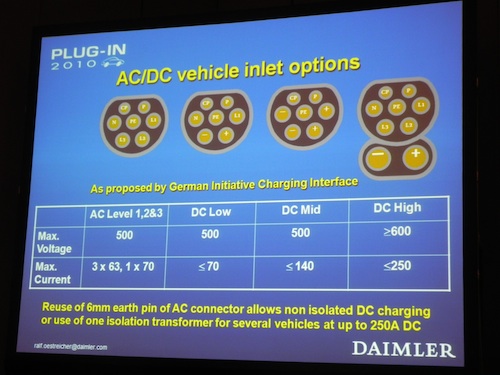In an effort to head off revisionist history, I started these notes when I did my first drive from Mexico to Canada in June 2012. Some of these have been removed or retired since then.
California DC chargers:
Hopefully in order:
1. May 2010, Vacaville, Eaton brand - PGE (public utility) open to public March 2011 only, free then
2. Fall 2010, Sacramento, AeroVironment brand - Nissan (auto manufacturer), private
3. Spring 2011, Cypress, Eaton brand - Mitsubishi (auto manufacturer) open to public, free, still there I think
4. March 2012, San Bernadino, Eaton brand - 7-11 store (retail public, private capital funds), public, free
5. April 2012, San Diego, JFE brand - SDG&E (public utility) private
6. April 2012, Palo Alto, Efacec brand - 350green (retail public, public/private funds) public, fee
7. May 2012, Belmont, Blink brand - Volkswagon Tech Center (private / public funding) free
8. May 2012, San Ramon, Blink brand - (public / private funding) free
9. June 2012, Los Angeles, Blink brand, locked in parking lot, closed midday
10. June 2012, Oregon and Washington, I-5 freeway completed with AeroVironment chargers ever 25-50 miles along the West Coast Electeic Highway
10. November 2012 - Fuji brand, San Juan Capistrano - first ChargePoint network DC charger (I was part owner)
11. Spring 2013 - first USA CCS installation, San Diego (I was present for the grand opening, concurrent with Plug-In 2013)



